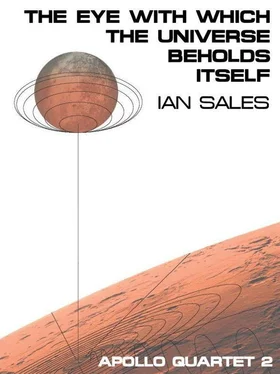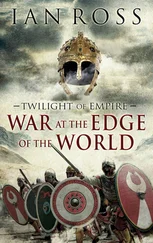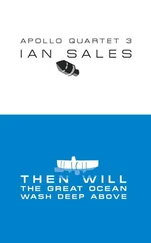Apollo 12The fourth lunar mission and the first American spacecraft to land on the Moon, at Oceanus Procellarum. Crew: Charles ‘Pete’ Conrad (CDR), Alan L Bean (LMP) and Richard F Gordon (CMP). Callsigns: Command Module Yankee Clipper (CM-108), Lunar Module Intrepid (LM-6). Launched 14 November 1969, landed on Moon 19 November 1969. Duration on lunar surface 31h 31m 12s.
Apollo 13This mission failed to complete after an explosion in an oxygen tank in the Service Module. The Lunar Module was successfully used as a lifeboat, and returned the crew to Earth. As a result of the disaster, further trips to the Moon were shelved, and NASA began working on a mission to Mars. Crew: James A Lovell (CDR), Fred W Haise (LMP) and John ‘Jack’ Swigert (CMP). Callsigns: Command Module Odyssey (CM-109), Lunar Module Aquarius (LM-7). Launched 11 April 1970.
Area 51A military base in southern Nevada some eighty miles north-west of Las Vegas. It was originally built for the development and testing of the Lockheed U-2 spy plane during the 1950s, expanded during the 1960s for the Lockheed A-12/SR-71 Blackbird programmes, and thereafter associated solely with highly-classified military aviation projects. It has been the subject of numerous conspiracy theories involving Unidentified Flying Objects and reverse-engineered alien technology, none of which have ever been officially confirmed. Other names for the base include Dreamland, Paradise Ranch and Groom Lake.
Ares 1After the cancellation of Apollo, the remaining seven Saturn V launch vehicles were transferred across to the Ares programme. Existing hardware was quickly re-engineered and by early 1974, Ares 1 was ready to launch. It put into LEO a S-IVB which had been modified into a “dry workshop” as per a design drawn up ten years earlier. This flyby spacecraft simulator, later known as the “Orbital Workshop”, would remain a base for the Ares programme throughout the next five years before eventually being re-purposed and renamed “Skylab”. Crew: John Young (CDR), T Kenneth Mattingly (pilot) and Charles Duke (science pilot). Launched 3 May 1974.
Ares 2This mission put a CSM and LM in orbit in order to test docking and rendezvous procedures with the flyby spacecraft simulator. Crew: Eugene Cernan (CDR), Ronald E Evans (pilot) and Robert F Walker (science pilot). Launched 18 September 1974.
Ares 3The first of two missions to test the habitability of the flyby spacecraft simulator. The three crew spent a total of 84 days in orbit and performed a number of valuable experiments on Closed Environmental Life Support Systems. Crew: Charles ‘Pete’ Conrad (CDR), Bradley E Elliott (pilot) and Joseph P Kerwin (science pilot). Launched 31 January 1975.
Ares 4The last test mission for the Ares programme, its crew of three spent eighteen months aboard the spacecraft flyby simulator in order to verify its long-term habitability. Crew: Alan L Bean (CDR), Jack R Lousma (pilot) and Owen Garriott (science pilot). Launched 15 October 1977.
Ares 5 to 7In order to reach the required velocity for its journey to Mars, the Ares 9 stack required three S-IVB stages for its Mars Orbit Injection burns. The launches were made in quick succession since the LOX/LH2 fuel was only viable for sixty days in orbit before boil-off reduced it to levels inadequate for the mission. The crews aboard the CSMs built the Ares 9 stack and remained in orbit until its departure. Crews: Ares 5, David Scott (CDR), Gerald P Carr (pilot) and Edward Gibson (science pilot); Ares 6, Thomas P Stafford (CDR), Vance D Brand (pilot) and Donald K ‘Deke’ Slayton (science pilot); and Ares 7, Richard F Gordon (CDR), Paul J Weitz (pilot) and Don L Lind (science pilot). Launched 27 September 1979, 3 October 1979 and 14 October 1979.
Ares 8The first part of the manned portion of the Ares 9 stack, carrying the Mars Module and the heatshield needed for the MM to land on the Martian surface. The heatshield was carried to orbit folded and needed to be extended and then its adaptor bolted to the descent stage of the MM. Like Ares 5 through 7, the crew remained in orbit until Ares 9’s departure. This put fourteen astronauts in LEO at the same time, the most people in orbit at one time by the US or USSR up to that point. Crew: Fred W Haise (CDR), Stuart A Roosa (pilot) and William R Pogue (science pilot). Launched 28 October 1979.
Ares 9The first, and to date only, manned mission to Mars. It was based on the Flyby-Landing Excursion Mode mission, using upgraded spacecraft originally built for Apollo lunar landings. The Ares 9 launch put into LEO the mission’s CSM and flyby spacecraft, a modified S-IVB, improved after lessons learned operating the Ares 1 flyby simulator. Once the stack had been bolted together, it was boosted on a conjunction-class mission, with a free-return trajectory, to the Red Planet. Thirty days out from Mars, the Mars Module — an uprated Lunar Module, strengthened and provisioned, and with a crew of one — undocked and continued on alone to Mars and a landing on the surface. The Ares flyby spacecraft passed within 150 miles of the planet as it swung about it and headed back to Earth. The MM spent nine days on the surface, before launching into orbit and then catching up with the flyby spacecraft for the 537-day return flight. Crew: Bradley E Elliott (CDR) and Robert F Walker (pilot). Callsigns: Command Module Endeavour (CM-120), Mars Module Discovery (LM-12). Launched 14 November 1979, landed on Mars 23 March 1980. Duration on Martian surface 221h 38m 17s.
Earth TwoThe name by which Gliese 876 d is officially known. The surface temperature at the equator is 325 K (125ºF) and far too hot for human habitation. The only human settlement, Phaeton Base, is in the north polar region, where temperatures are no hotter than the equatorial regions of Earth. Datum air pressure is 18.43 psi, but there is no oxygen in the atmosphere. To date, the only water discovered is deep beneath the surface, and no signs of life have been found.
Element 115A superheavy synthetic element used to power the Serpo engine. Under intense antiproton bombardment, the strong nuclear force of the Element 115 nucleus is amplified, resulting in a local distortion of the spacetime continuum.
The Face on MarsThe name given a rock formation in the Cydonia region on Mars. In 1976, the Viking 1 orbiter took a series of photographs of the Martian surface. In image #35A72, scientists spotted a mesa 1.2 miles long which appeared to resemble a humanoid face. Initially dismissed as a “trick of light and shadow”, a second photograph, image #70A13, with a different sun-angle, only heightened the likeness. It was considered sufficiently puzzling to choose Cydonia as the landing site for the Ares 9 mission. Many of the photographs taken by Major Bradley Elliott on the Martian surface remain classified.
Fermi’s ParadoxNamed for the physicist Enrico Fermi, who first postulated it in an informal discussion in 1950, the Paradox hypothesises a contradiction between the probability of the existence of alien civilisations and the lack of evidence that such civilisations exist.
Flyby-Landing Excursion Module (FLEM)Proposed in 1966 by RR Titus of United Aircraft Research Laboratories as a means of getting a manned spacecraft to Mars quickly and cheaply. It was based in part on the flyby missions proposed by the Planetary Joint Action Group, which included members from NASA and NASA planning contractor, Bellcomm. Planetary JAG plans focused primarily on a flyby mission using a free-return trajectory, but Titus calculated that a piloted MM could separate from the flyby spacecraft during the Mars voyage and change course to intersect the planet. A separation 60 days out from Mars would result in a 16-day stay on the Martian surface, or a separation 30 days out would give a 9-day stay on the surface. The MM would then launch, pursue the flyby spacecraft and rendezvous. Titus proposed that a nuclear-thermal rocket weighing as little as 130 tons, with a 5-ton lander, could make the trip. In the event, since research on nuclear rockets had been abandoned, the Ares spacecraft was forced to use existing chemical rockets, and the final design weighed in at 200 tons, with a 16-ton Mars Module.
Читать дальше












